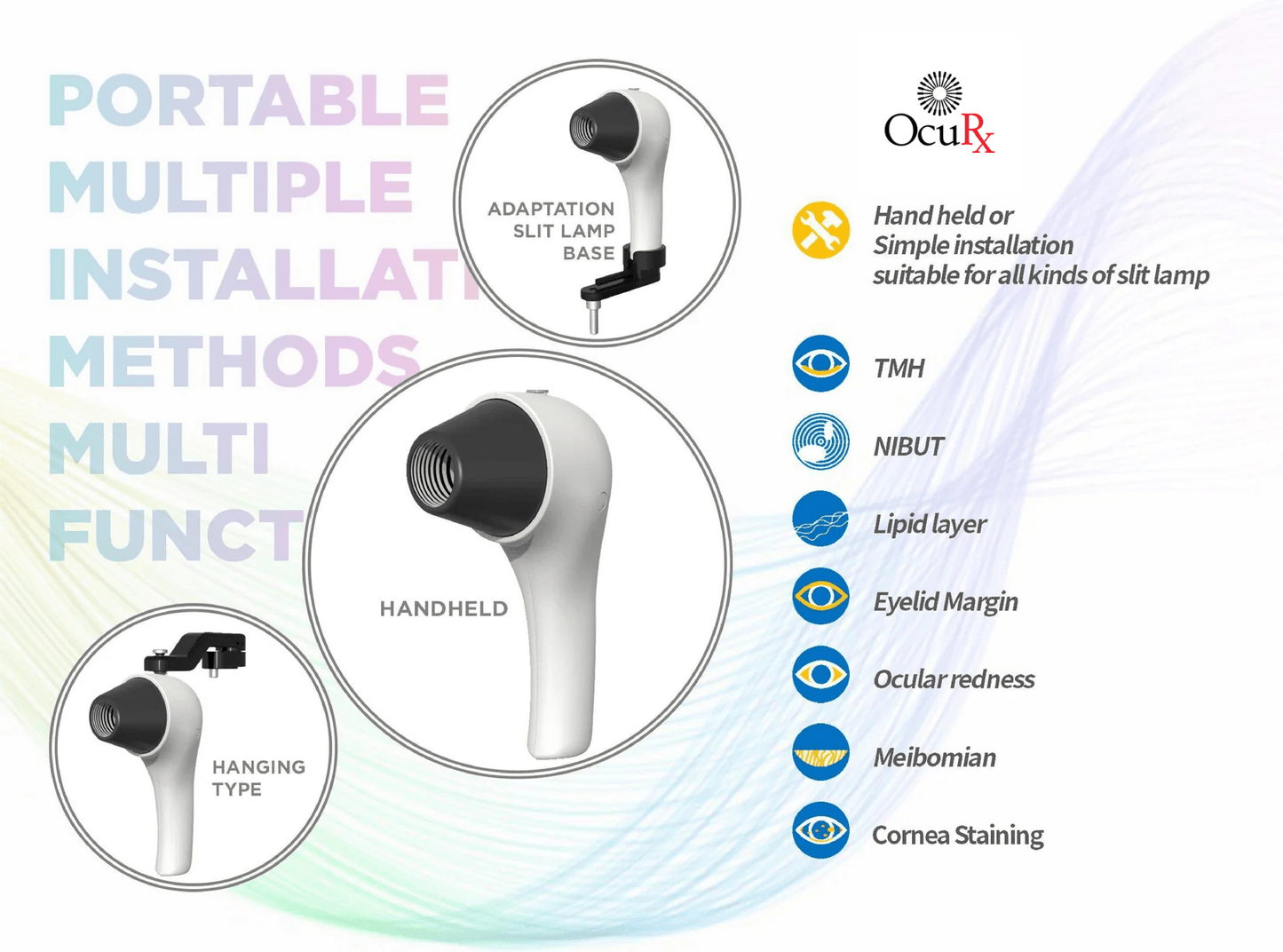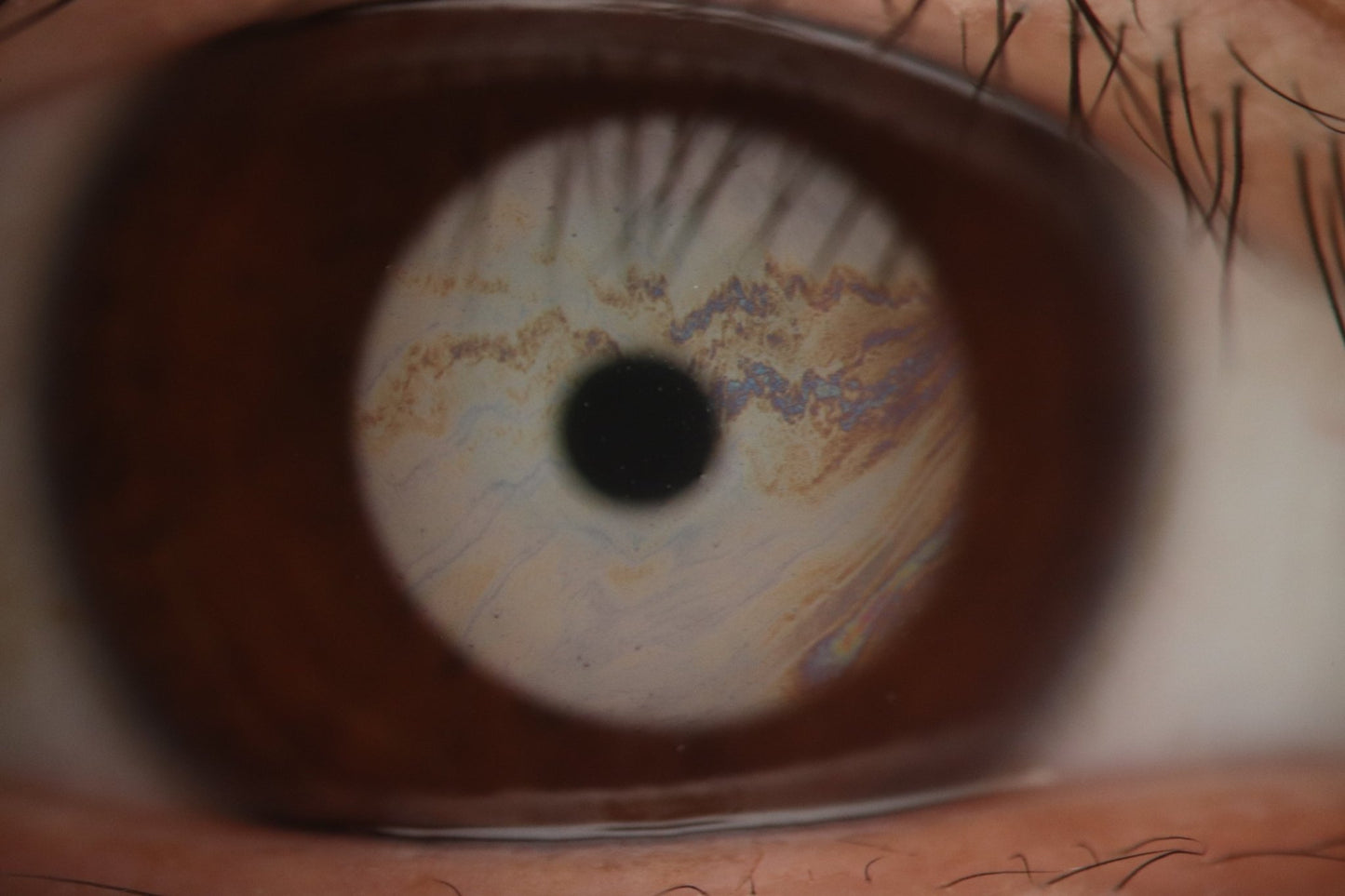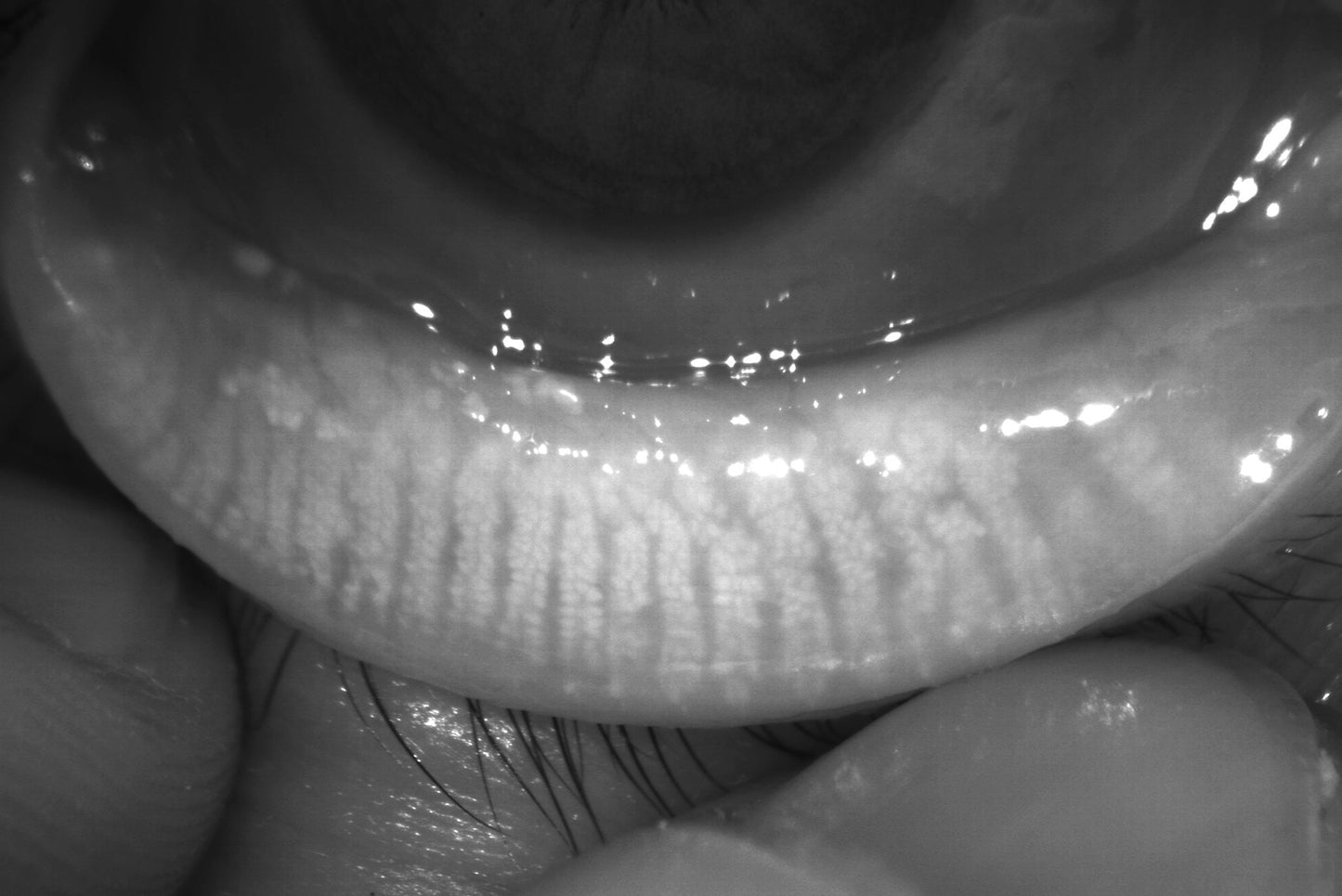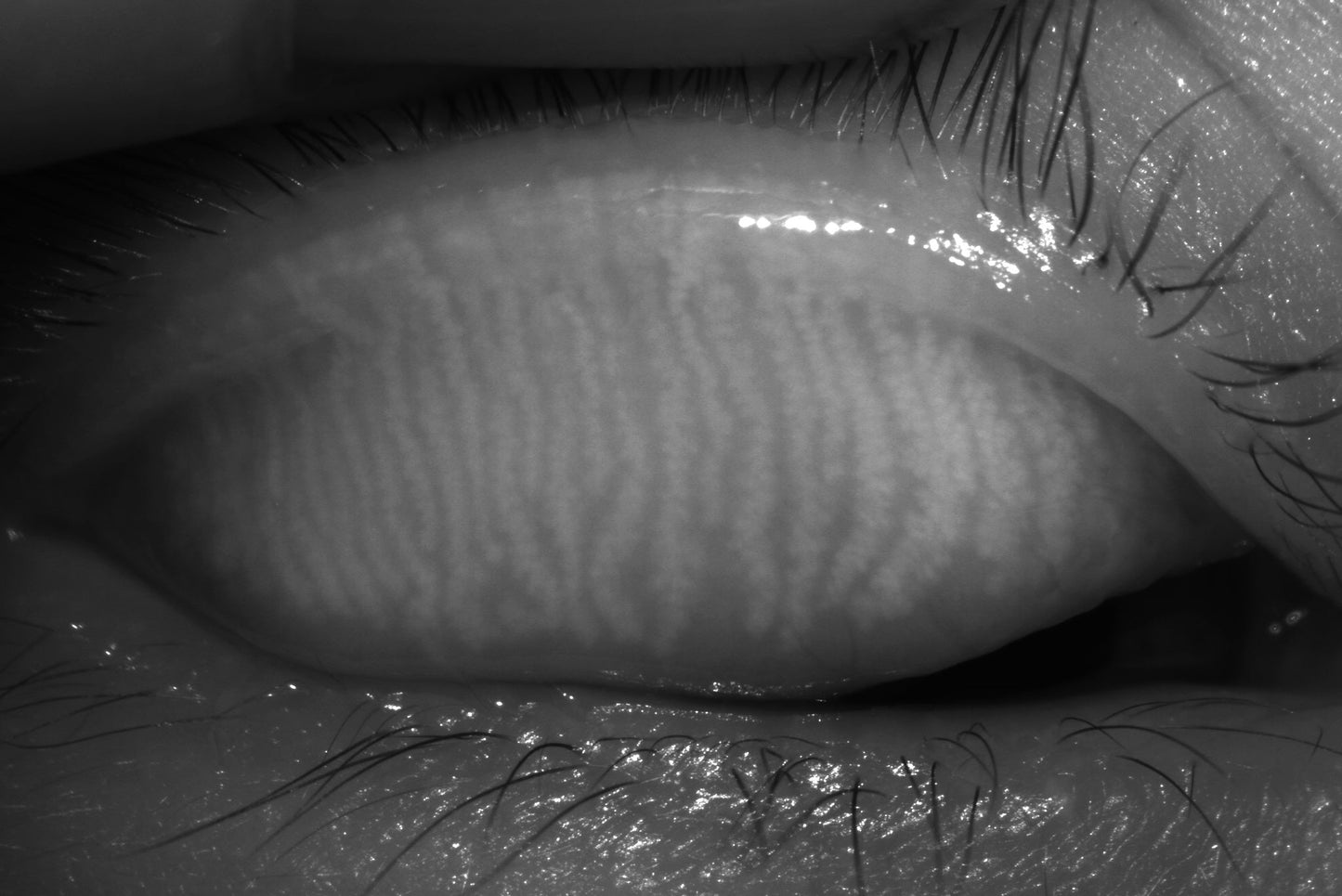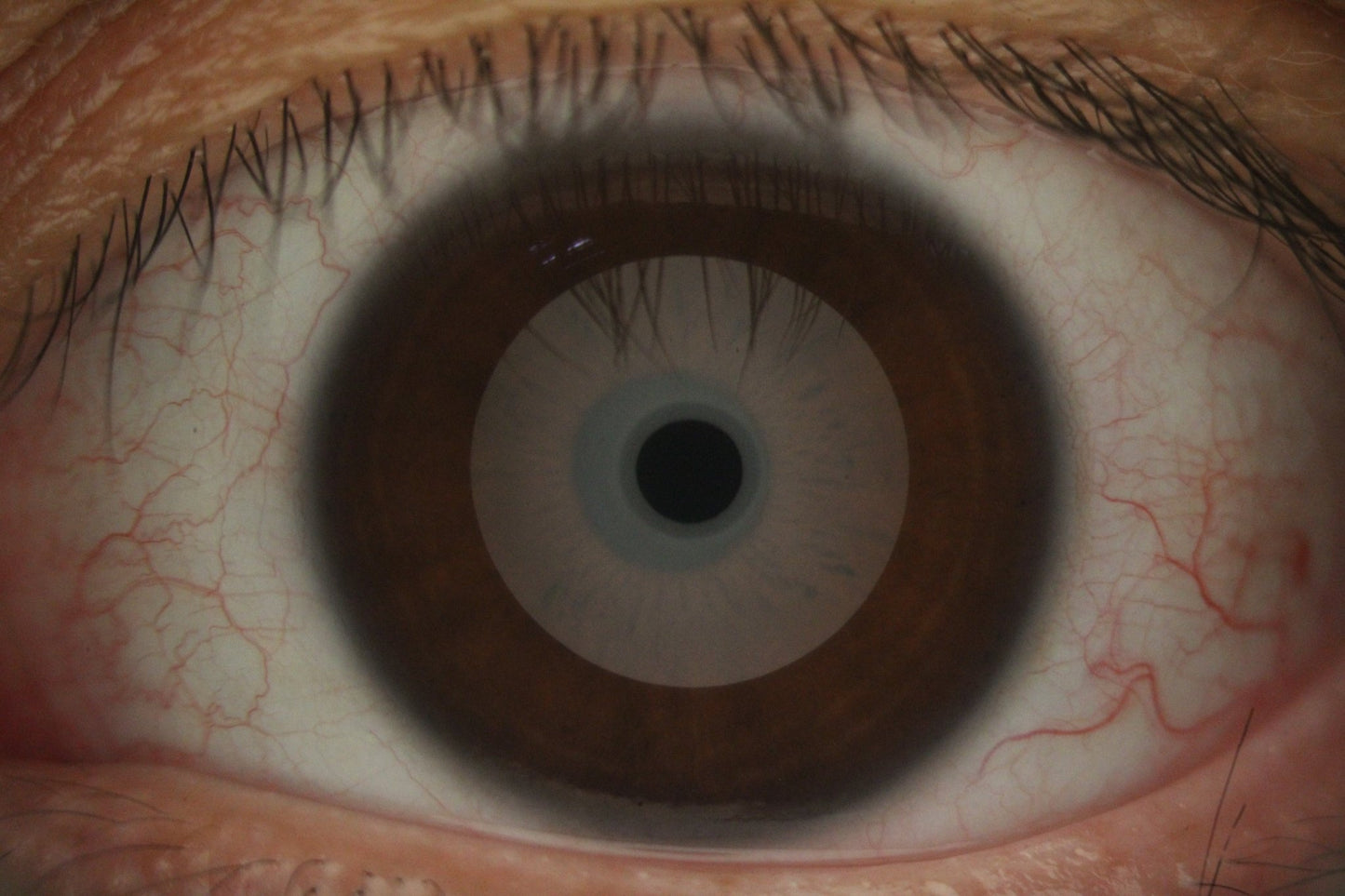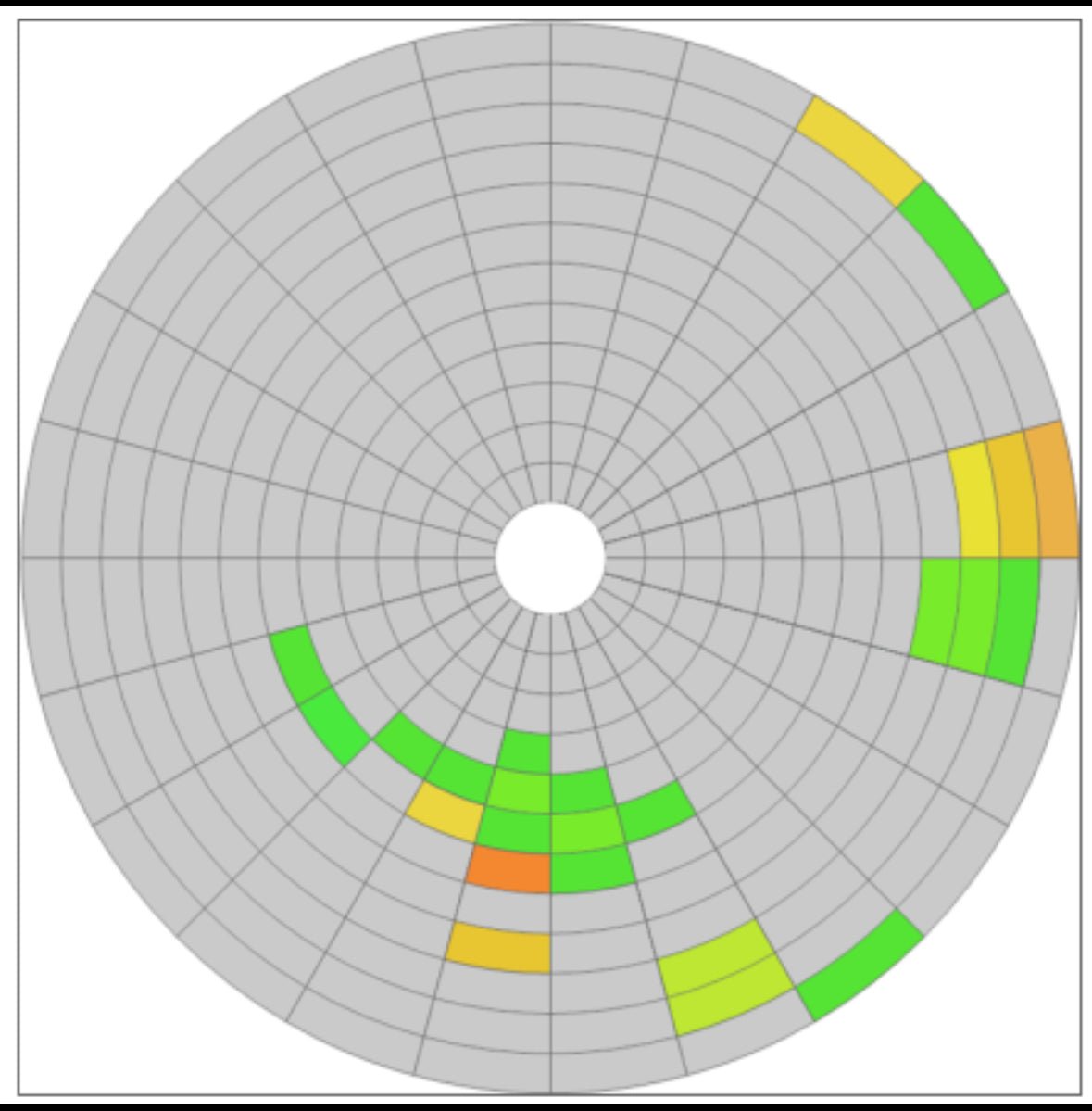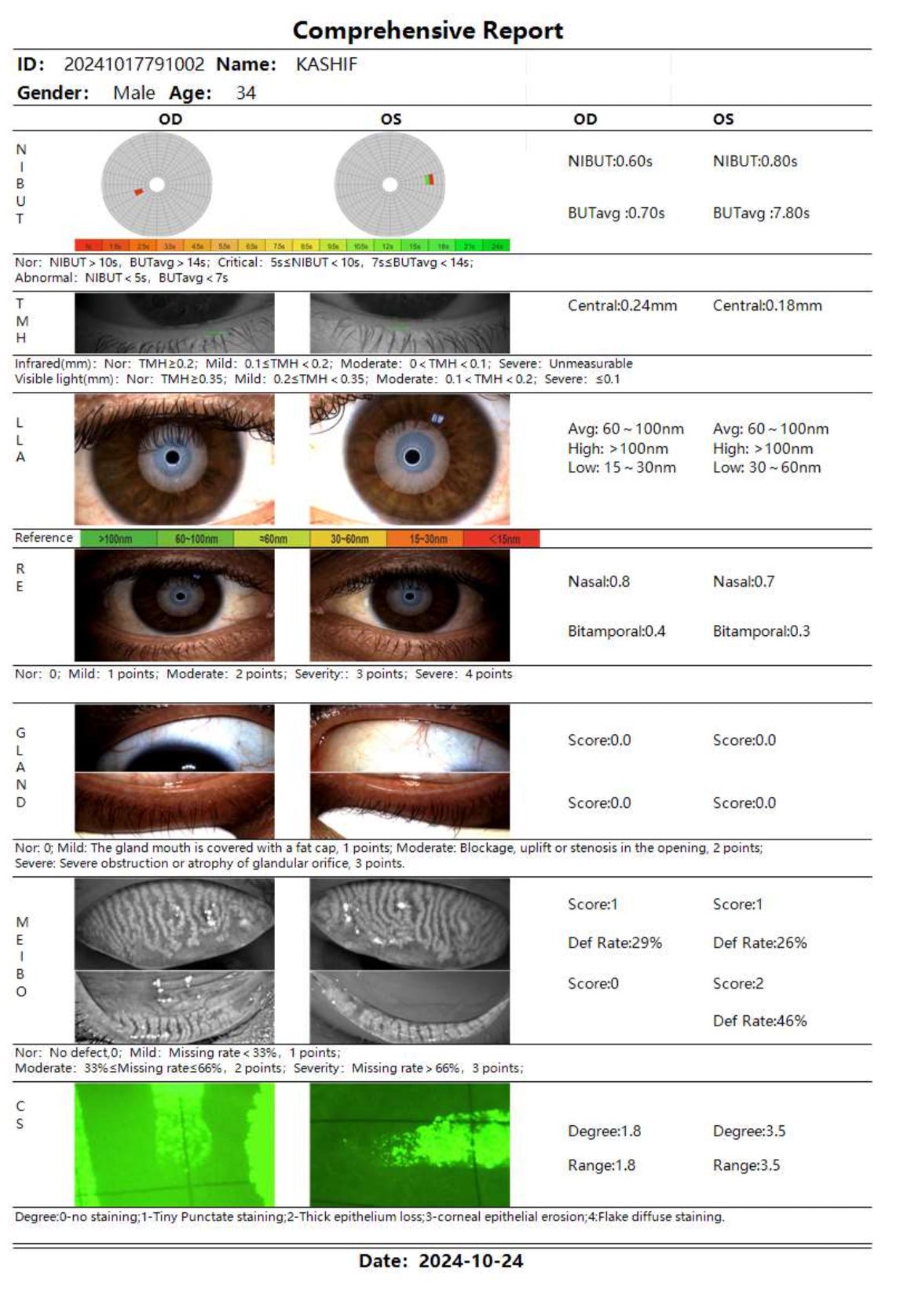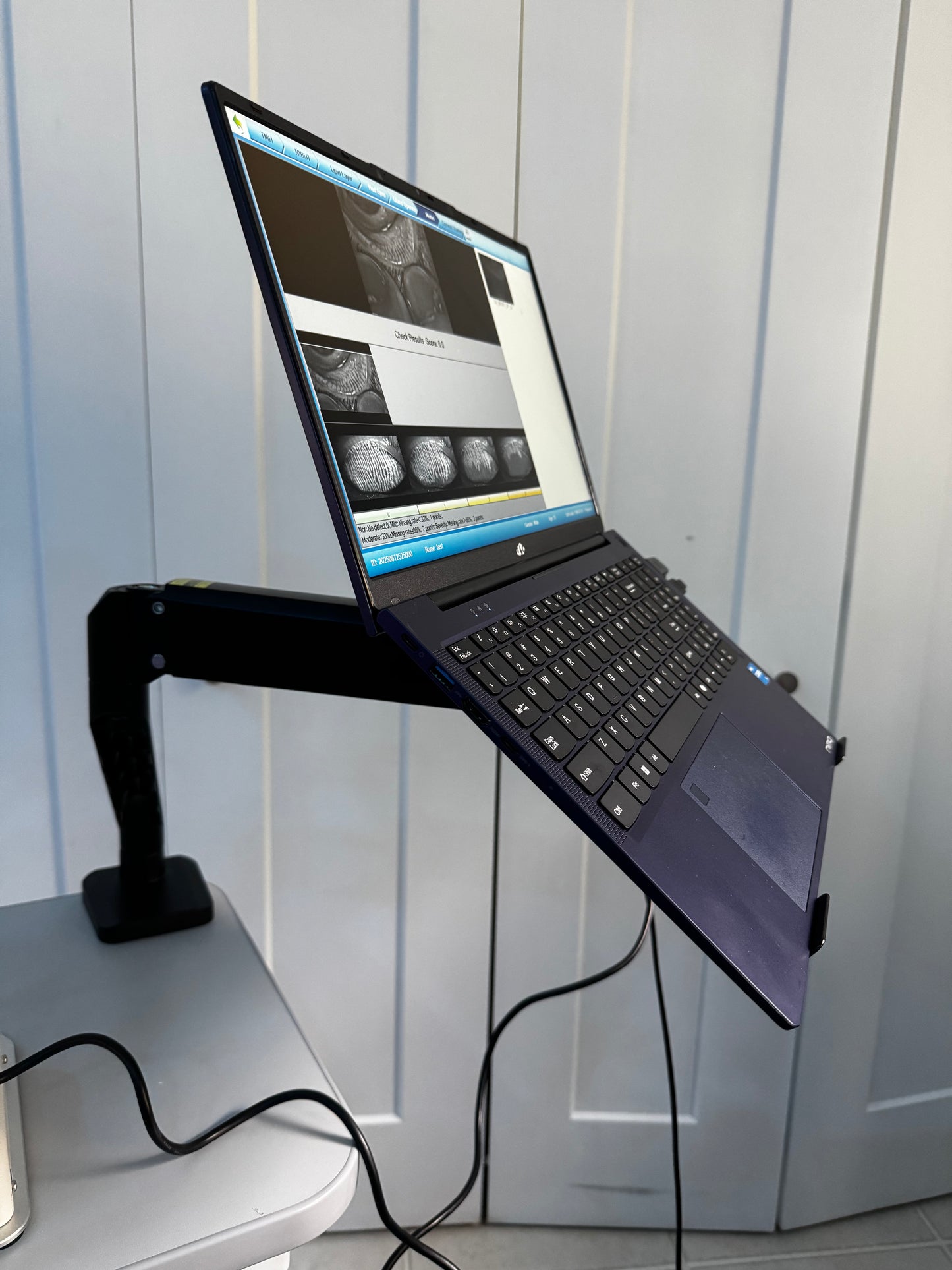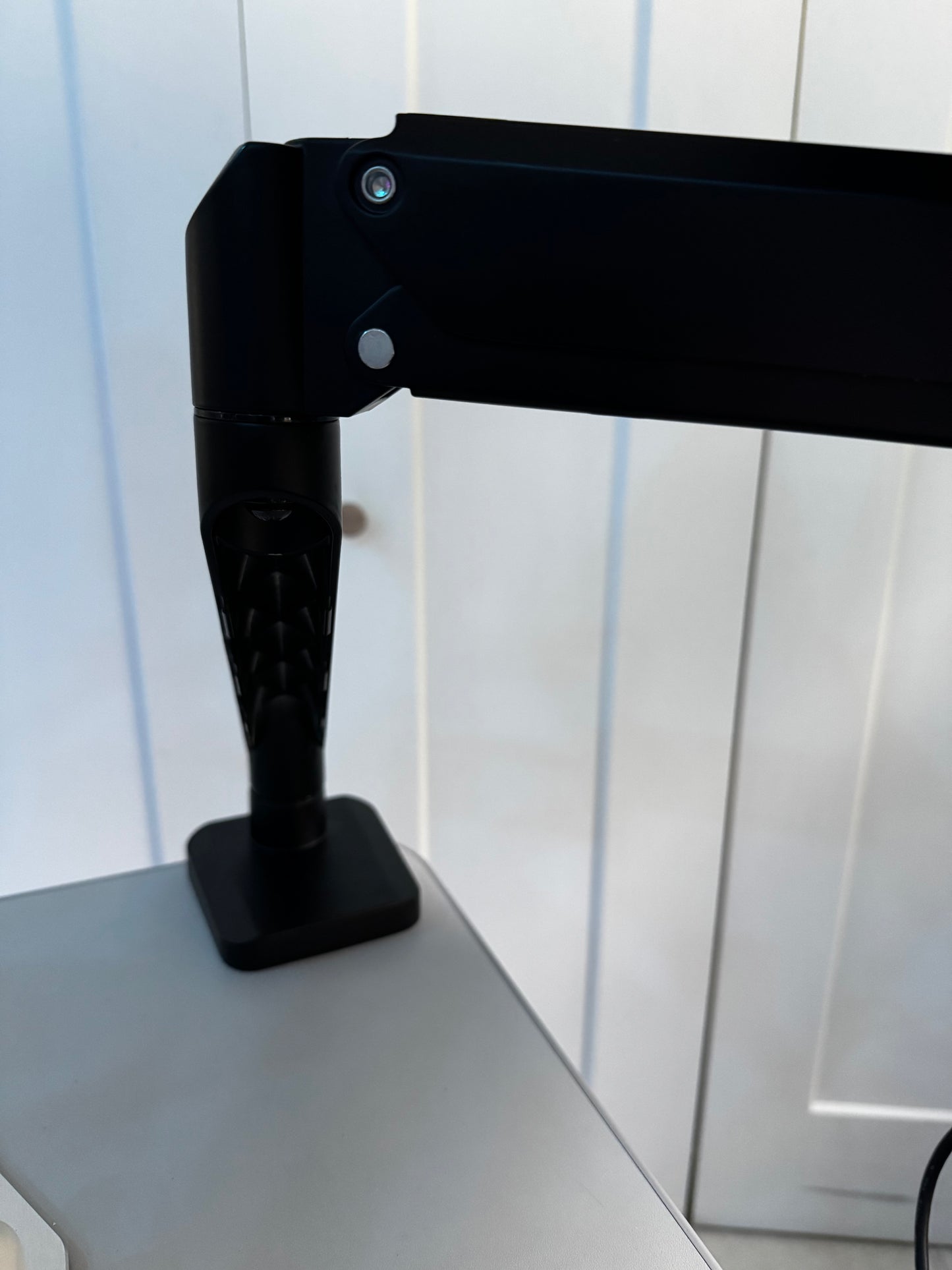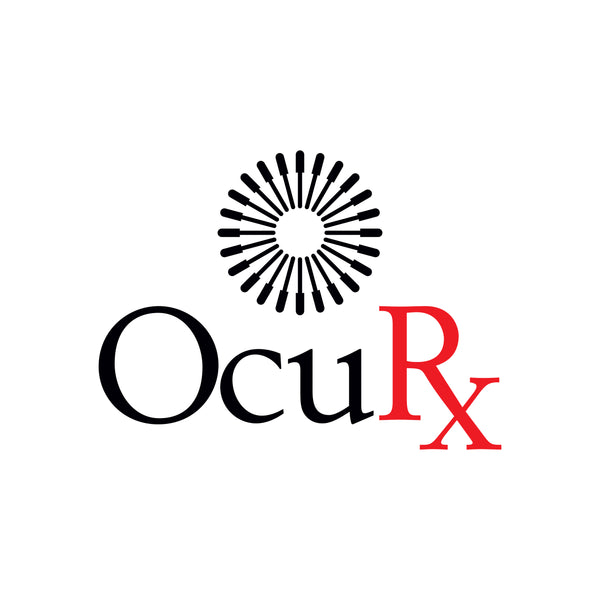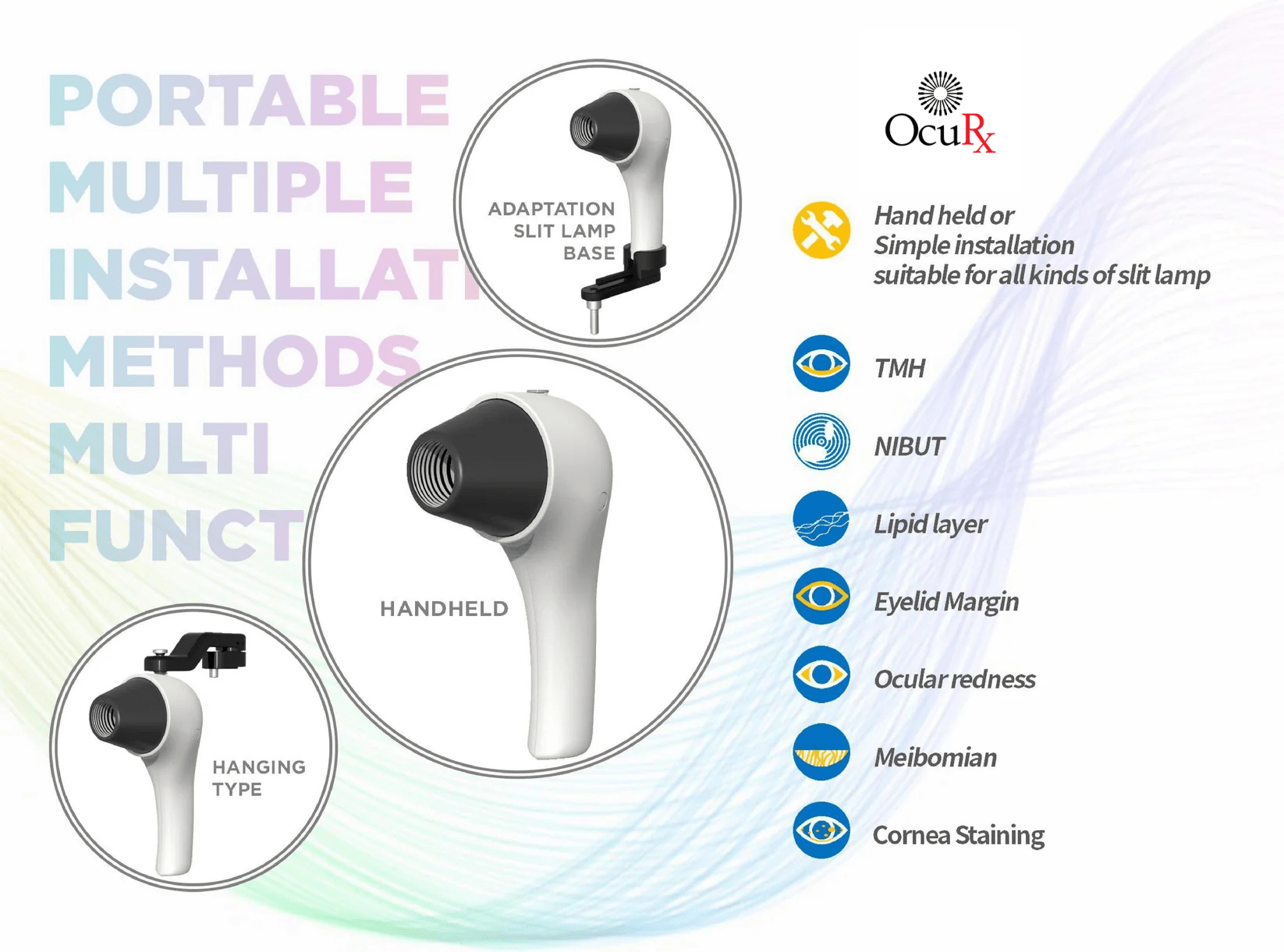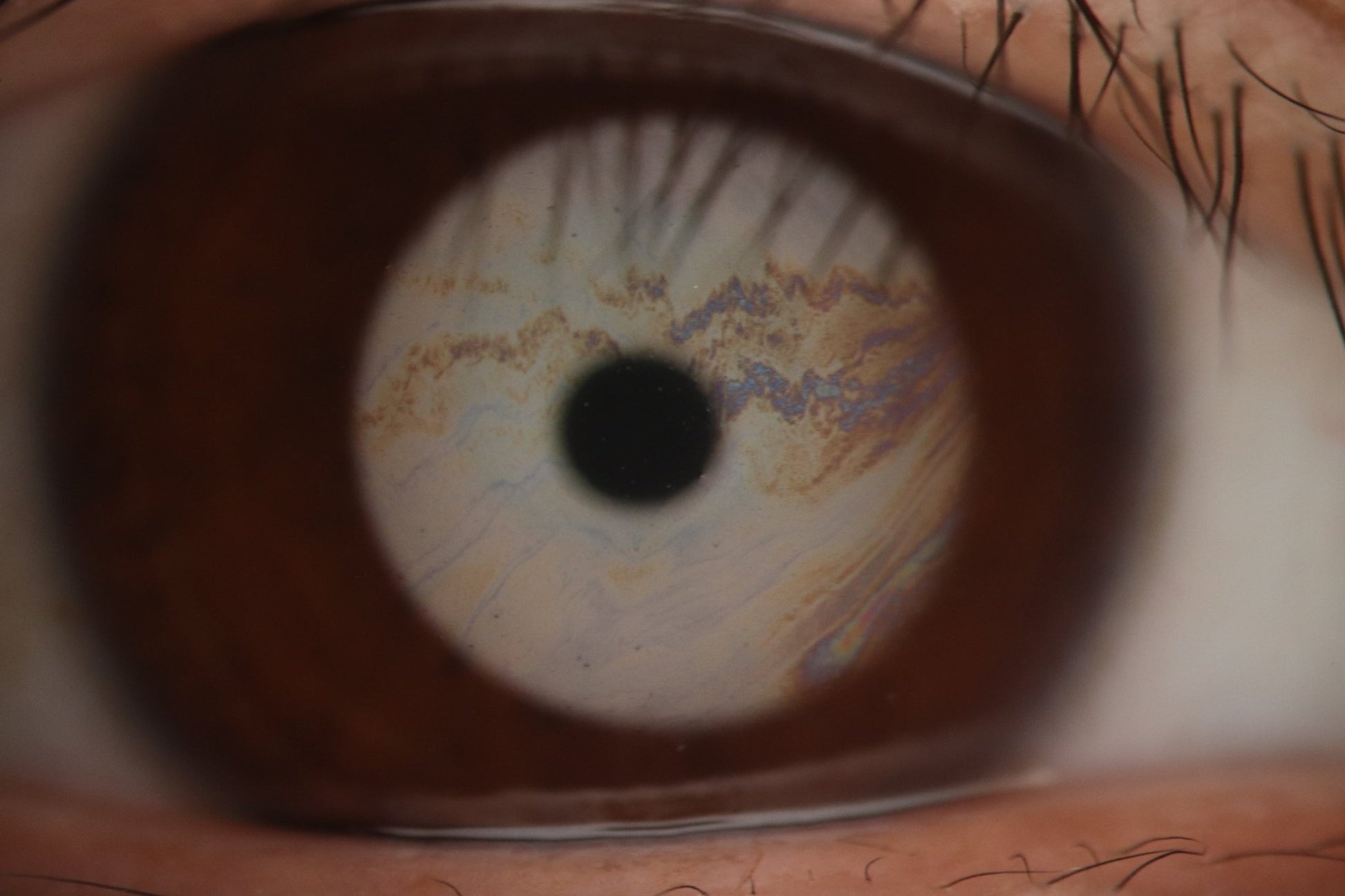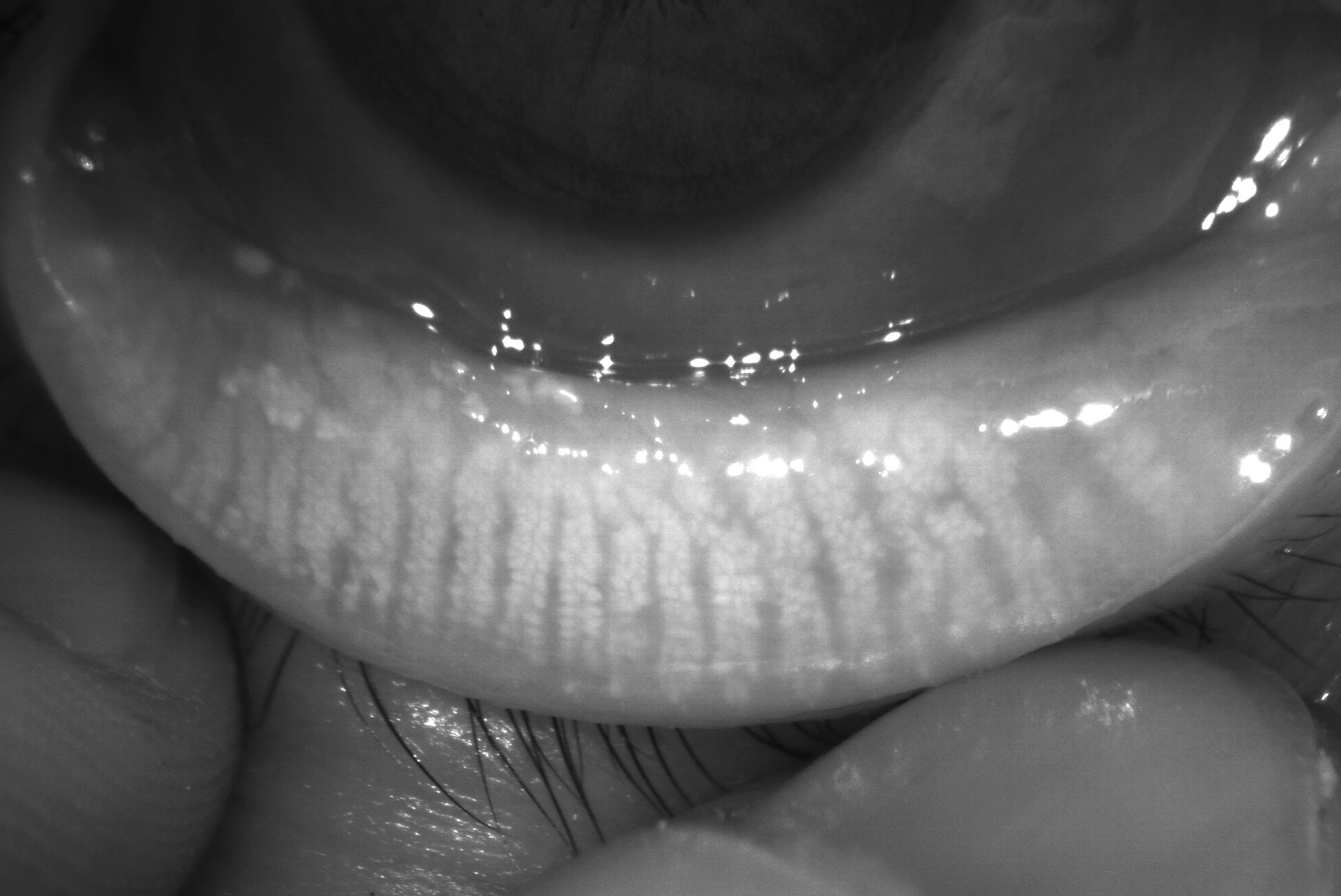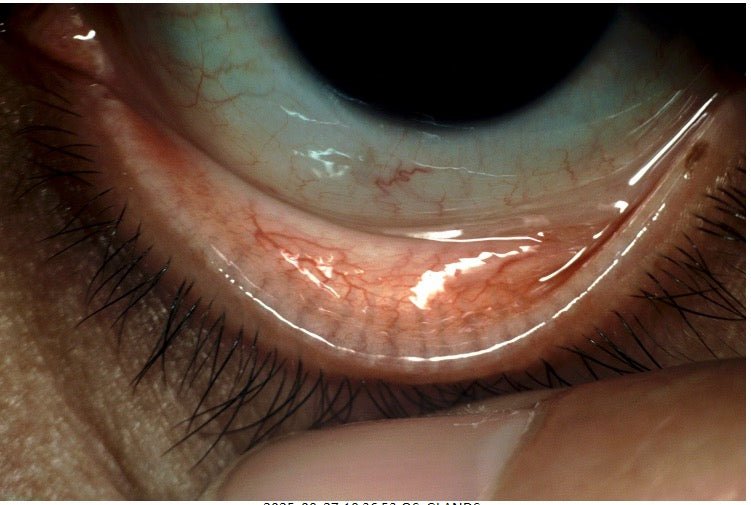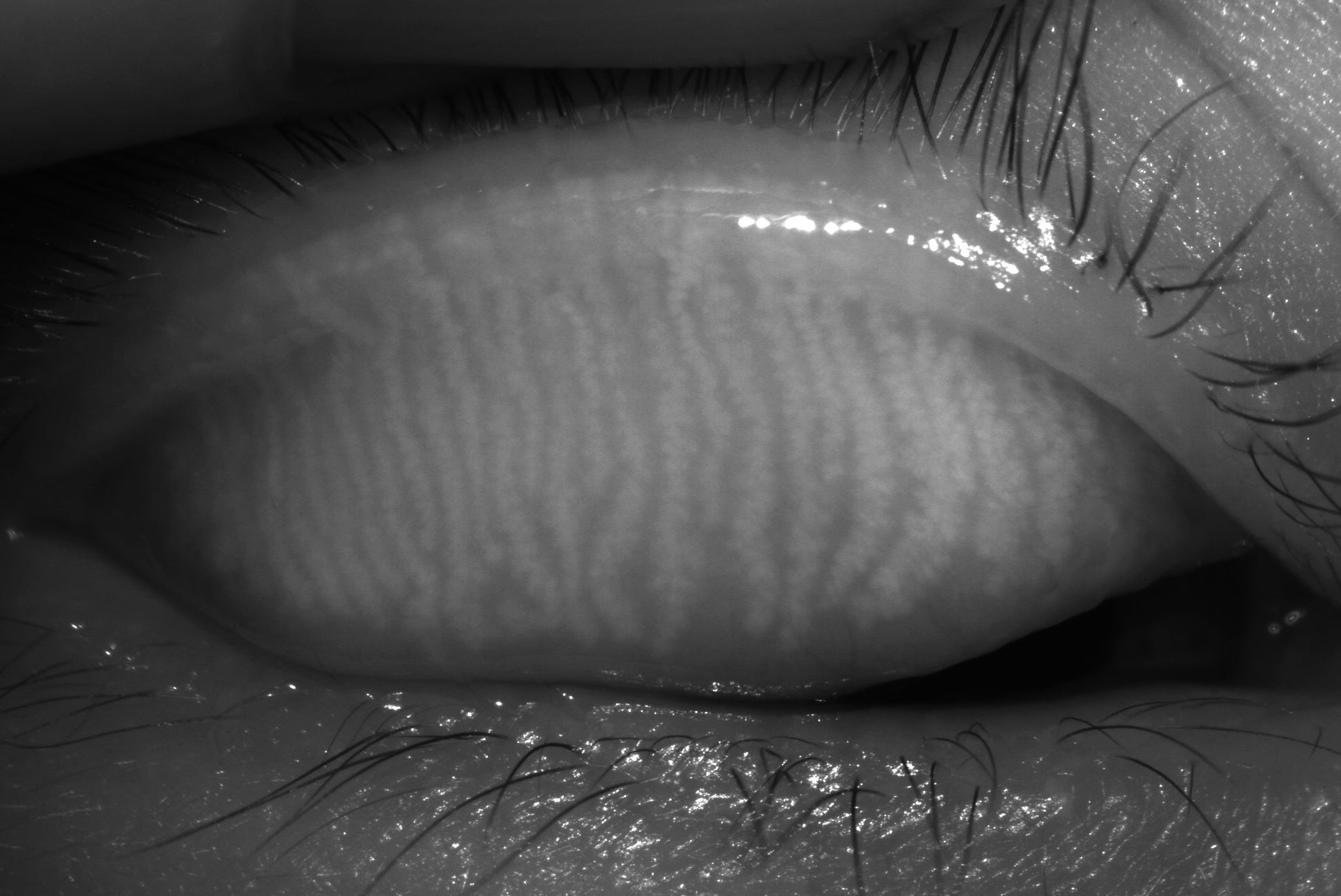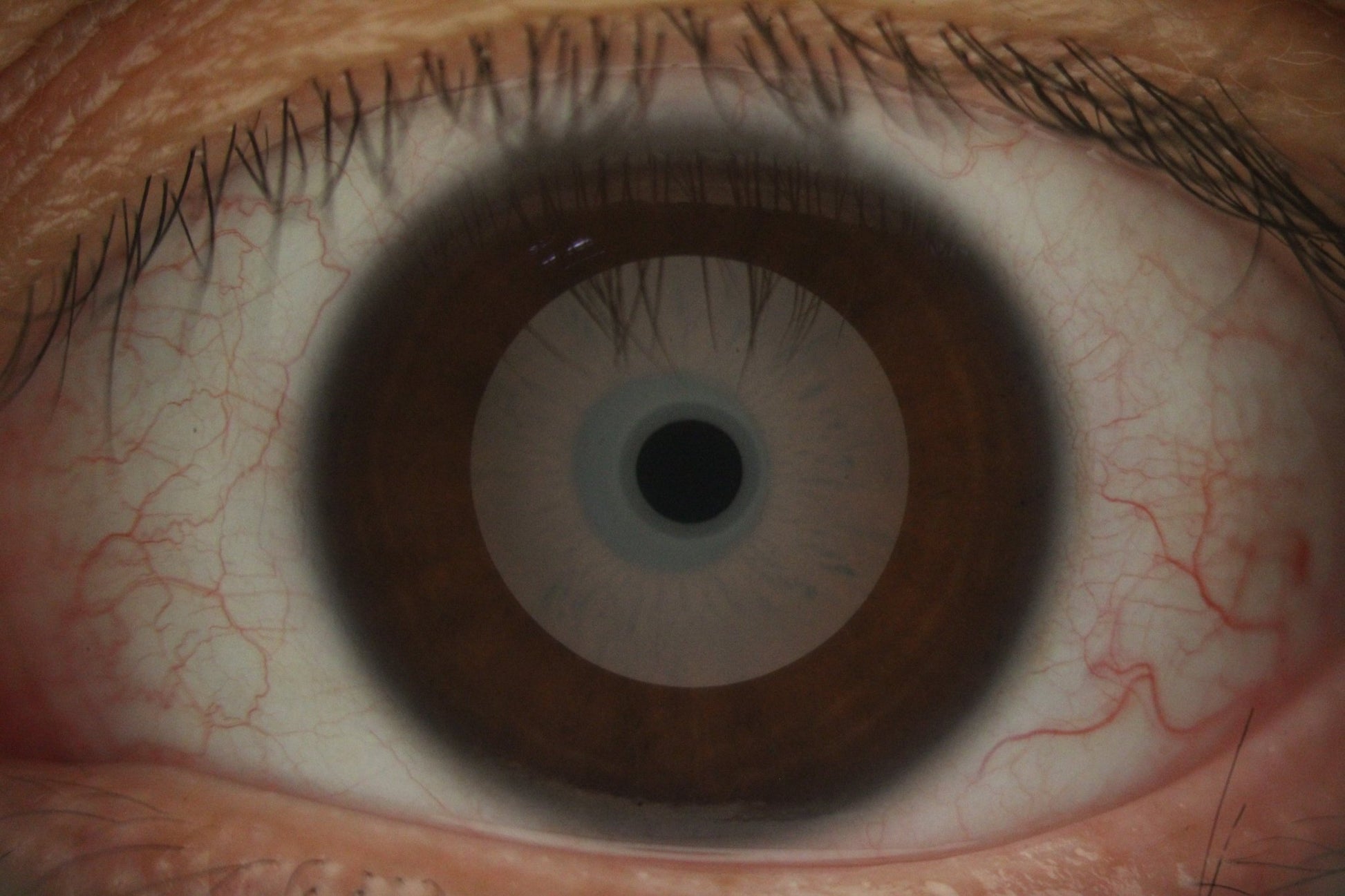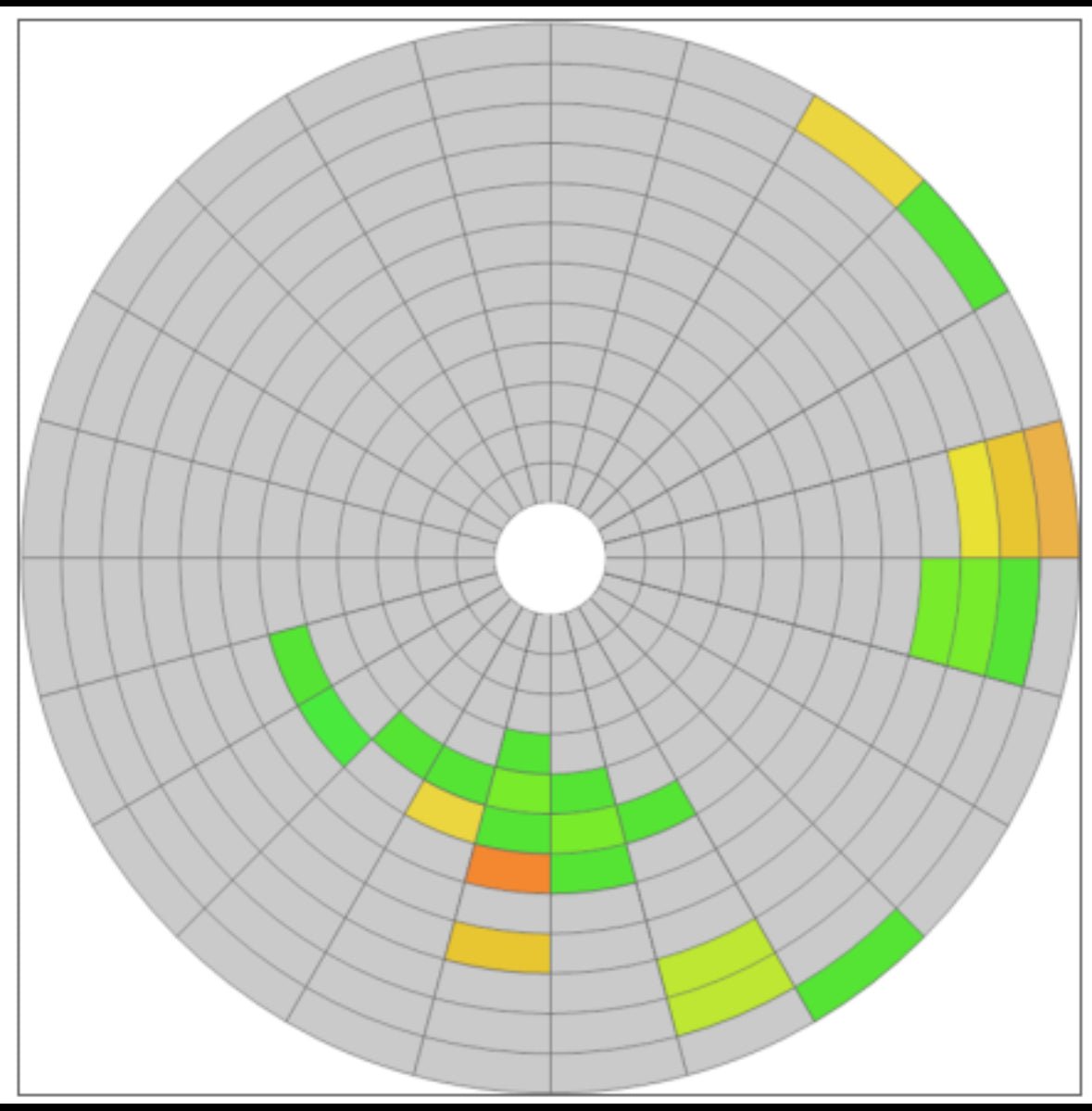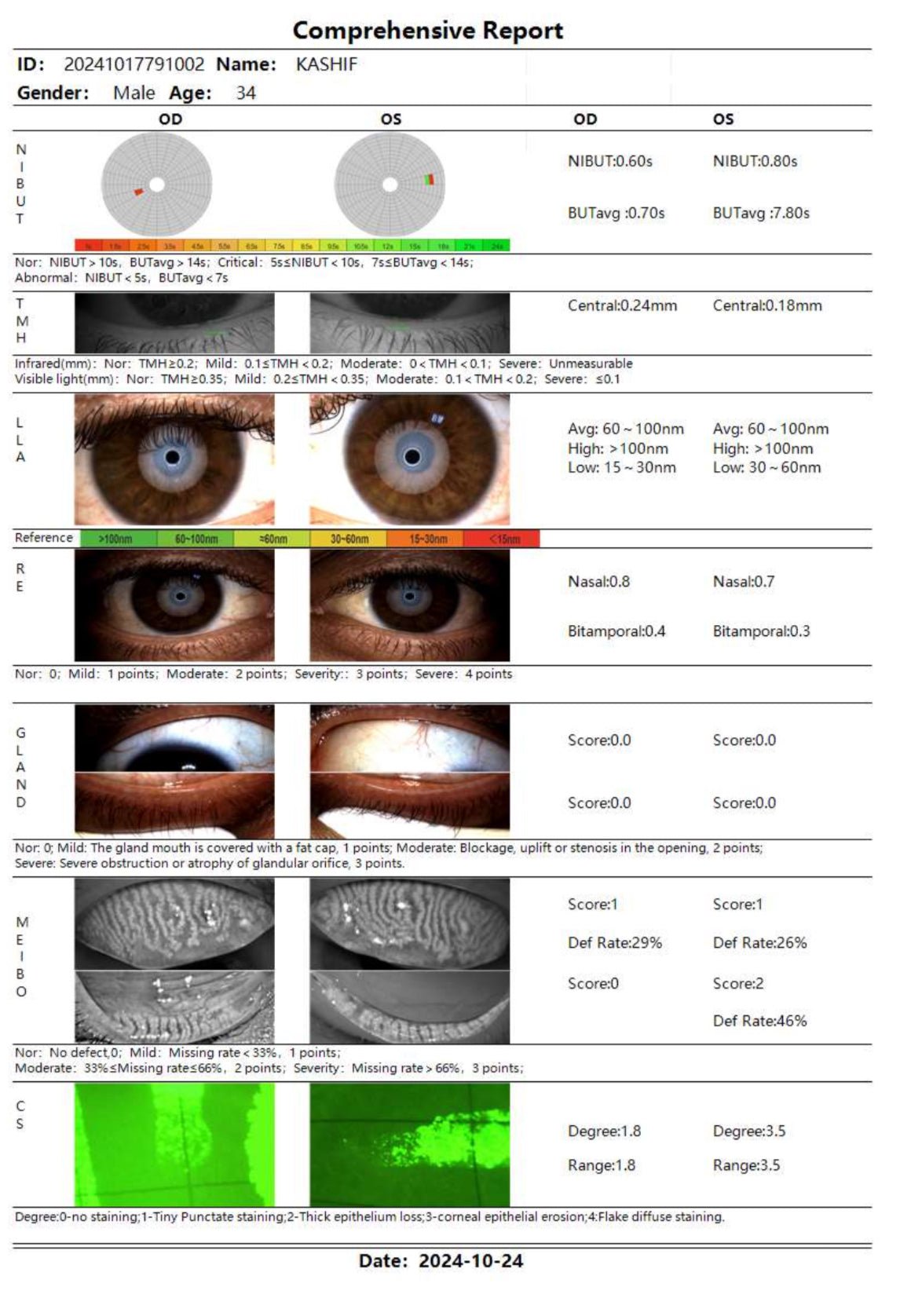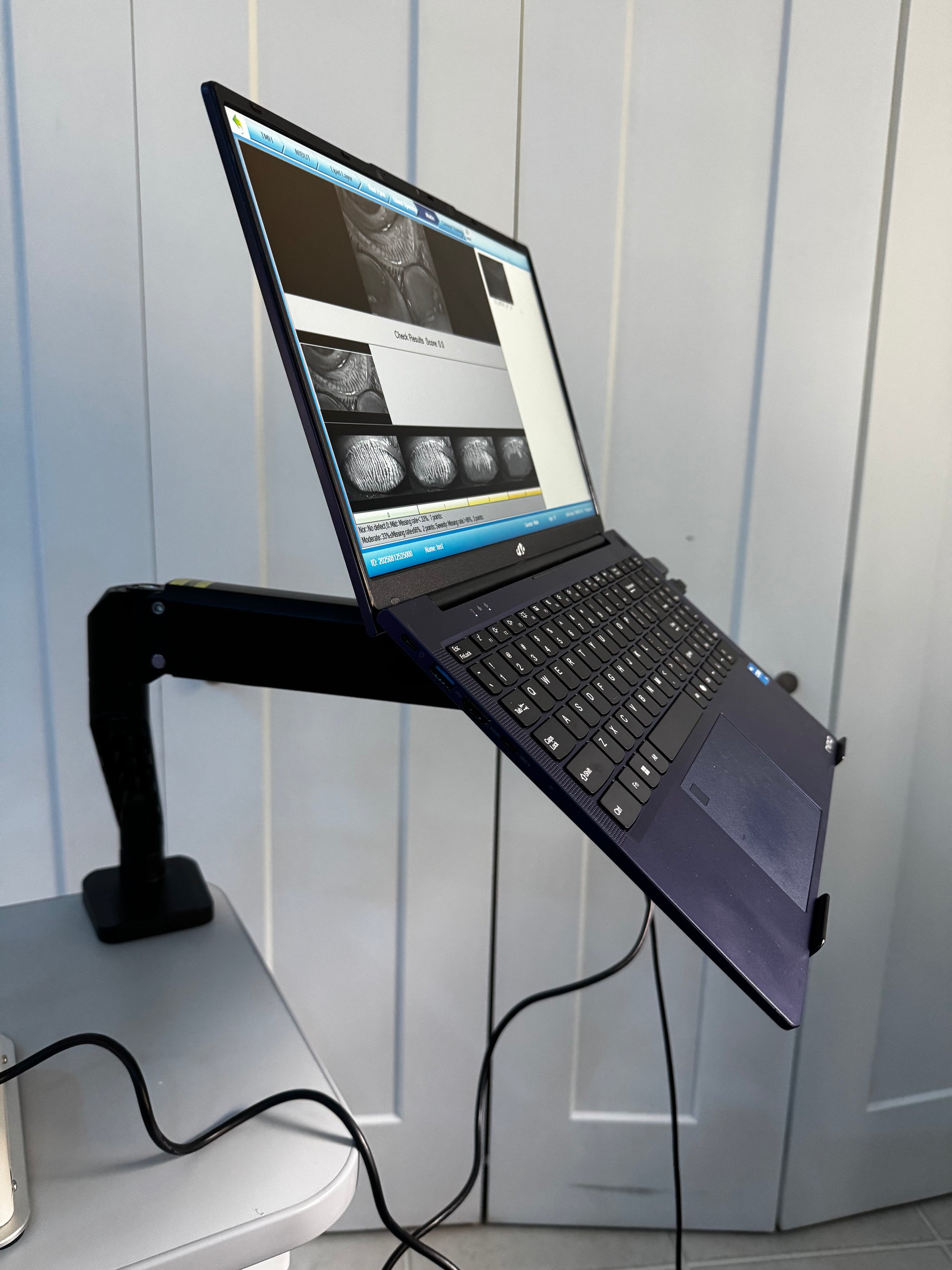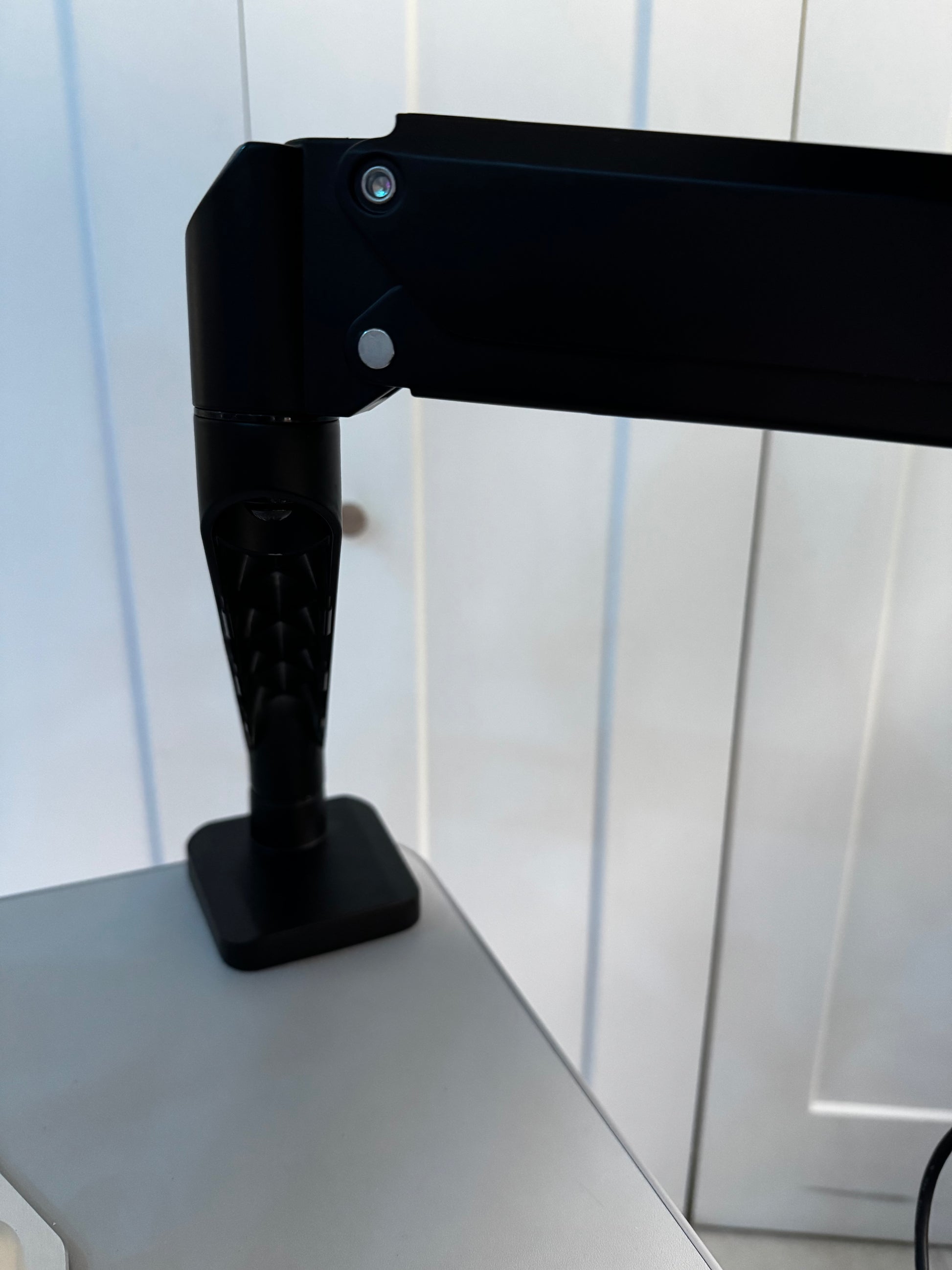OcuRx
DA-2 Dry Eye Analyzer
DA-2 Dry Eye Analyzer
Couldn't load pickup availability
*Special Promo - Free Meibomian Gland Forceps and 3 USB Dry Eye Mask Samples until 12/31/25*
Why is the DA-2 Dry Eye Analyzer the Best Option?
The DA-2 Dry Eye Analyzer, developed by OcuRx, is a compact, multi-functional diagnostic device specifically designed for efficient, non-invasive assessment of dry eye disease (DED) and meibomian gland dysfunction (MGD). Priced at just $4,900, it stands out as an exceptional value in a market where similar tools often exceed $10,000 or even $20,000, making it ideal for eye care professionals looking to enhance their practice without a massive upfront investment.
Our Multi-Functional Dry Eye Analyzer fully supports 8 dry eye testing functions, including NiBut (Non-Invasive Break-Up Time), Lipid Layer Static Imaging, Meibomian Gland Opening, TMH (Tear Meniscus Height), Meibography (Infrared and Color), Corneal Staining, Anterior Segment Imaging/Video and Red Eye Measurement.
The DA-2 is designed to be user-friendly providing quick and accurate results. It can be used handheld or attached to a slit lamp. The entire dry eye examination can be completed in about five minutes. A complete analysis and evaluation is provided at the end of testing. The DA-2 brings two slit lamp attachments that are compatible with all systems, the device can be used handheld or with slit lamp.
Advanced Dry Eye Diagnosis Includes:
1. NiBUT (Non-Invasive Tear Break-Up Time) is a cutting-edge diagnostic test used to evaluate tear film stability, a critical factor in diagnosing dry eye syndrome. Unlike traditional methods, NIBUT is a noninvasive procedure that avoids using dyes or fluids, making it comfortable and highly accurate. This preferred test measures the time in seconds between a patient’s last blink and the first appearance of a dry spot in the tear film, as observed through specialized video analysis.
2. Lipid Layer Static - Lipid layer static measurement refers to evaluating the lipid layer's thickness, structure, or stability on the surface of the tear film in the eye.
3. Gland Opening - gland opening measurement refers to assessing the orifices or ducts of the meibomian glands, which are located along the edges of the eyelids. Measuring the state of the gland openings helps in diagnosing conditions like meibomian gland dysfunction, this test can also be used for color meibography.
4.Tear Meniscus Height (TMH) measurement - refers to evaluating the tear meniscus height, the thin strip of tear fluid that forms at the junction between the eyeball and the eyelids. This measurement is commonly used to assess tear volume and is an essential diagnostic tool for evaluating conditions such as dry eye disease and ocular surface disorders.
5. Meibography - Meibography is an imaging technique used to visualize and evaluate the structure of the meibomian glands, which secrete oils (meibum) that form the lipid layer of the tear film. This test is critical in diagnosing meibomian gland dysfunction (MGD), one of the leading causes of evaporative dry eye disease.
6. Corneal Staining - Corneal staining is a noninvasive procedure that uses special eye drops to highlight areas of damage or dryness on the cornea, the clear front surface of the eye. By identifying these issues, optometrists can accurately diagnose and treat conditions like Dry Eye Syndrome, Corneal Abrasions, and Corneal Ulcers.
7. Red Eye Measurement - Red eye measurement assesses the severity, extent, and underlying causes of ocular redness, which is often a sign of inflammation or irritation in the eye. Redness in the eye occurs when blood vessels on the eye's surface (particularly in the conjunctiva or sclera) become dilated due to various factors, including infection, allergies, dry eye, trauma, or other eye conditions. This test also works well for resolution 12x anterior segment imaging.
8. Anterior Segment Imaging and Video -
Discover the transformative power of anterior segment imaging and video. This advanced diagnostic technology provides high-resolution images and real-time video of the eye’s anterior segment, including the cornea, iris, lens, and anterior chamber, enabling precise diagnosis and treatment planning.
Detailed imaging detects subtle abnormalities in conditions such as dry eye, corneal dystrophies, and anterior uveitis, thereby improving diagnostic precision.
TESTIMONIAL
“DA-2 Dry eye analyzer has been a game-changing, portable, and affordable device that revolutionizes the diagnosis and management of MGD-related dry eyes. With its high-quality imaging, user-friendly interface, and non-invasive nature, the DA-2 simplifies the diagnostic process and enhances patient outcomes. It's easy to use and requires minimal space. I highly recommend the DA-2 to eye care professionals for efficient MGD diagnosis and management."
- Dr Mario Carcamo

-Includes SPEED and OSDI Assessment Integrated into the program
-Includes PDF or JPEG download of comprehensive report
30-DAY MONEY BACK GUARANTEE
Share
